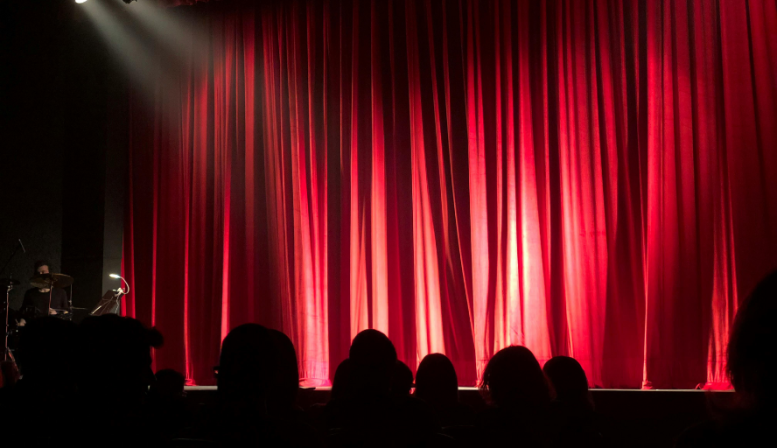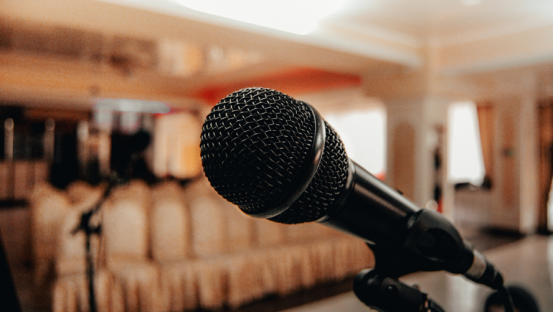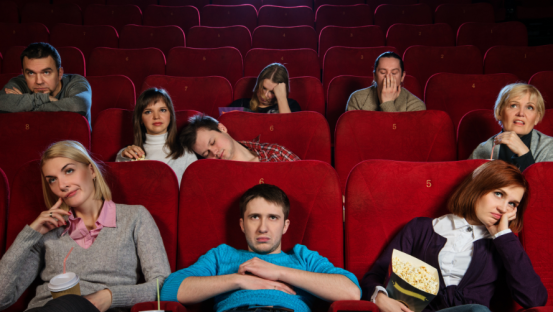Practical Strategies for Speakers Dealing with Bright Lights

When you think of public speaking, one of the first things that comes to mind is the bright lights that will shine on you while you’re onstage. They can be blinding and make you feel vulnerable by visually isolating you where you’re set to give your speech.
That’s why dealing with bright lights can be tough for speakers. Mentioning them as you speak is a major rookie mistake, such as saying, “Wow, these lights are really bright.” After all, the lights are there for a reason: to help the audience see you, especially if your speech is being filmed.
Experts believe that the best thing you can do is to cope. Learning how to handle bright lights can make a big difference in your speeches and help your message come across clearly.
Understanding Challenges with Bright Lights
Symptoms of Discomfort
Bright lights can cause eye strain, headaches, and difficulty focusing for speakers onstage. They may also experience fatigue and irritability. In the long run, they can even suffer retinal damage.
Impact on Performance
When faced with bright lights while speaking, you may experience obscured vision. That can make it more challenging for you to maintain eye contact—a key factor for audience engagement while giving a presentation. Alongside the fact that the glare can also lead to visual distractions, this means bright lights can hinder your ability to convey your message effectively.
Psychological Effects
The intense brightness of lights can trigger feelings of anxiety and nervousness in speakers. This heightened stress response can impact your confidence and overall performance onstage.
How to cope with bright light while speaking
Donning protective eyewear
Bright lights can damage your eyes, which is why wearing sunglasses is vital to shield you from sunlight when you’re outdoors. But what if you’re giving a speech indoors? Don’t worry—there’s protective eyewear for that, too.

Investing in a high-quality pair of glasses can significantly reduce eye strain and discomfort through the use of various lens technologies. Oakley’s glasses such as the Holbrook and Sobriquet have the brand’s patented Stealth anti-reflective coatings. Lenses with these coatings can block the excess reflections and glare that come from bright stage lights, and you can even add your prescription on top if you have one.
By incorporating such eyewear into your speaking attire, you can maintain clear vision and focus during your presentations. That’s not to mention how glasses can make you appear more authoritative on your speech’s subject matter, as studies have shown how glasses can make you look smarter and more trustworthy.
Adjusting Speaker Positioning
When speaking under bright lights, position yourself slightly off to the side of the brightest source. Maintaining a slight angle from the point of brightness will reduce direct glare and allow you to engage with your audience effectively without being dazzled. You can also adjust the height and angle of the podium or stage to ensure that you are not directly facing the brightest light source.
Staying Focused
During a presentation, find ways to help you stay focused despite the bright lights.
You can try mindfulness practices such as meditation or yoga. These can prepare you to ignore any distractions caused by bright lights and maintain focus once you’re at your next public speaking engagement.
Building Confidence
Try practicing deep breathing techniques to calm any fear or anxiety before facing bright lights. Stand up straight, arch your back, and breathe out as heavily as you can. From here, slowly inhale as much air as possible, hold your breath for about 10 seconds, and exhale gradually through pursed lips. You can practice speaking in front of mirrors to get comfortable with your reflection.
Motivational Strategies
Visualize success by imagining a supportive audience even under intense lighting conditions. Positive affirmations like “I am a capable speaker” and “I am feeling confident” can reinforce your self-esteem and diminish stage fright.
Collaborating with Lighting Professionals
If you feel that you’ll need more assistance in coping with the bright lights at your next speaking event, consider working with the lighting professionals at the venue. These experts offer customized solutions tailored to the speaker's needs, manipulating light sources such as strobe lights or studio lighting to create the ideal ambiance for speaking engagements. Their knowledge can help reduce glare and shadows, making it easier for speakers to communicate effectively.
By leveraging their expertise to create a lighting setup optimized for your comfort and visibility, you can avoid any challenges posed by bright lights while improving your onstage presence. You can also engage with your audience more effectively and leave a lasting impression. Taking this proactive approach will demonstrate your commitment as a speaker to delivering high-quality presentations.
Here are a few things you can try when working with the lighting professionals at your next venue.
Optimizing Room Lighting Conditions
Adjustable Options
Having adjustable lighting options in the speaking environment is crucial for speakers dealing with bright lights. It allows you to control the intensity of the light source based on your comfort and visibility needs.
Natural vs. Artificial
Natural lighting offers a softer, more flattering glow that enhances the speaker's presence. On the other hand, artificial lighting provides consistent brightness levels regardless of external conditions, ensuring a stable visual environment for speakers. If possible, ask the lighting professionals you’re working with if they can switch harsh white stage lights with bulbs that offer warmer and more natural tones.
Balanced Setup
Creating a balanced lighting setup involves a combination of natural and artificial light sources. This approach helps reduce harsh shadows and glare, making it easier for speakers to maintain eye contact with the audience. By strategically placing light sources around the room, speakers can ensure even illumination without causing distractions.
You can work with a lighting professional to achieve the optimal lighting setup that meets your needs and the technical requirements they need to follow, such as if the event will be filmed or live-streamed.
Utilizing Filters
Types
You can use filters to diminish the harshness of bright lights during speaking engagements. These include diffusion and color correction filters.
Diffusion filters scatter light, resulting in a softer and more flattering illumination for speakers that also doesn’t blind them. Filters like the Rosco Opti-Sculpt can even make for a more immersive experience, with designers like Jason Hand using them to create a more captivating art exhibit experience—something lighting professionals may want to replicate at your next public speaking engagement if you suggest it to them.
On the other hand, color correction filters adjust the color temperature of lights to create a more natural and appealing look on camera. These can be used during recorded events.
Practical Applications
By utilizing filters, speakers can significantly improve their on-camera presence by reducing glare and shadows caused by intense lighting. This enhances the visual quality of videos and ensures a more comfortable experience for both the speaker and the audience.
In scenarios where natural lighting is uncontrollable, or when artificial lighting sources are too harsh, incorporating these tools can make a notable difference in the overall aesthetics of public speaking events. Whether it's for educational videos, corporate presentations, or live streams, the use of filters and screens can elevate the viewing experience for viewers, enhance audience engagement, and boost speaker confidence.
Conclusion: The Importance of Adapting to Bright Lights
Dealing with bright lights as a speaker requires a combination of mental resilience, physical preparedness, and practical strategies. By understanding the impact of bright lights, preparing effectively, implementing techniques to minimize discomfort and maintain focus, and collaborating with on-site lighting professionals, speakers can deliver engaging and impactful presentations, regardless of the lighting conditions.
Remember, facing bright lights is an opportunity to shine, so embrace the challenge and let your expertise and passion illuminate the stage.




